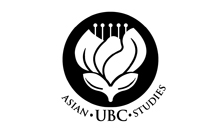Saturday, July 7, 2012, 9:00am – 10:15am
“Changing Perspectives: Politics, Identity and Buddhism in Contemporary Sri Lankan Art”
Sabine Grosser (University of Paderborn). Politics, identity and Buddhism – contemporary Sri Lankan artists are facing a complex globalized culture, which is changeable and multifaceted – and stands in a strong Buddhist tradition. In my paper I introduce the artwork of two major contemporary Sri Lankan artists: Jagath Weerasinghe and Druvinka Madawela. Both artists define themselves in their artworks referring to their Buddhist background – but in very different ways. Jagath Weerasinghe defines himself as a political artist. He reflects in his paintings and installations his identity as a Buddhist Singhalese man. Whereas Druvinka Madawela experiments with new painting methods. Educated and living in India she refers to Buddhism in a very fundamental way. She creates her own universe in her individual painting style with strong reference to Buddhist philosophy. Both oeuvres represent two differing, contemporary, artistic approaches with regard to Buddhism.
“The Emergence of the Visible in the Works of Chen Zhen”
Anne Vincent-Durand (Institut d’Arts, Lettres et Histoire, U.C.O., Angers, France).The works of Chen Zhen, and especially his 1996 installation Daily Incantations, urge us to question the meaning of representation through the divergence that exists between an object and its image. This installation is made up of chamber pots hanging like bells around a globe both filled and covered in all types of electronic scrap. Coming from each pot can be heard the typical sound of daily cleaning chores. The artist gives priority to the transformation and re-interpretation of everyday artefacts meant to contain nocturnal human excrement, thus revealing metaphorically the essence of what lies beyond objective reality. The confrontation with those objects brings suddenly to light the enigma of the world, of things, of being. This work of art is unique in its radical approach to appearances. Here the word “appearance” is given the full expression of its ambiguity, pointing no longer to illusion – what conceals and dupes – but rather to the actual emergence of a reality that can only exist in the shared experience of looking.




